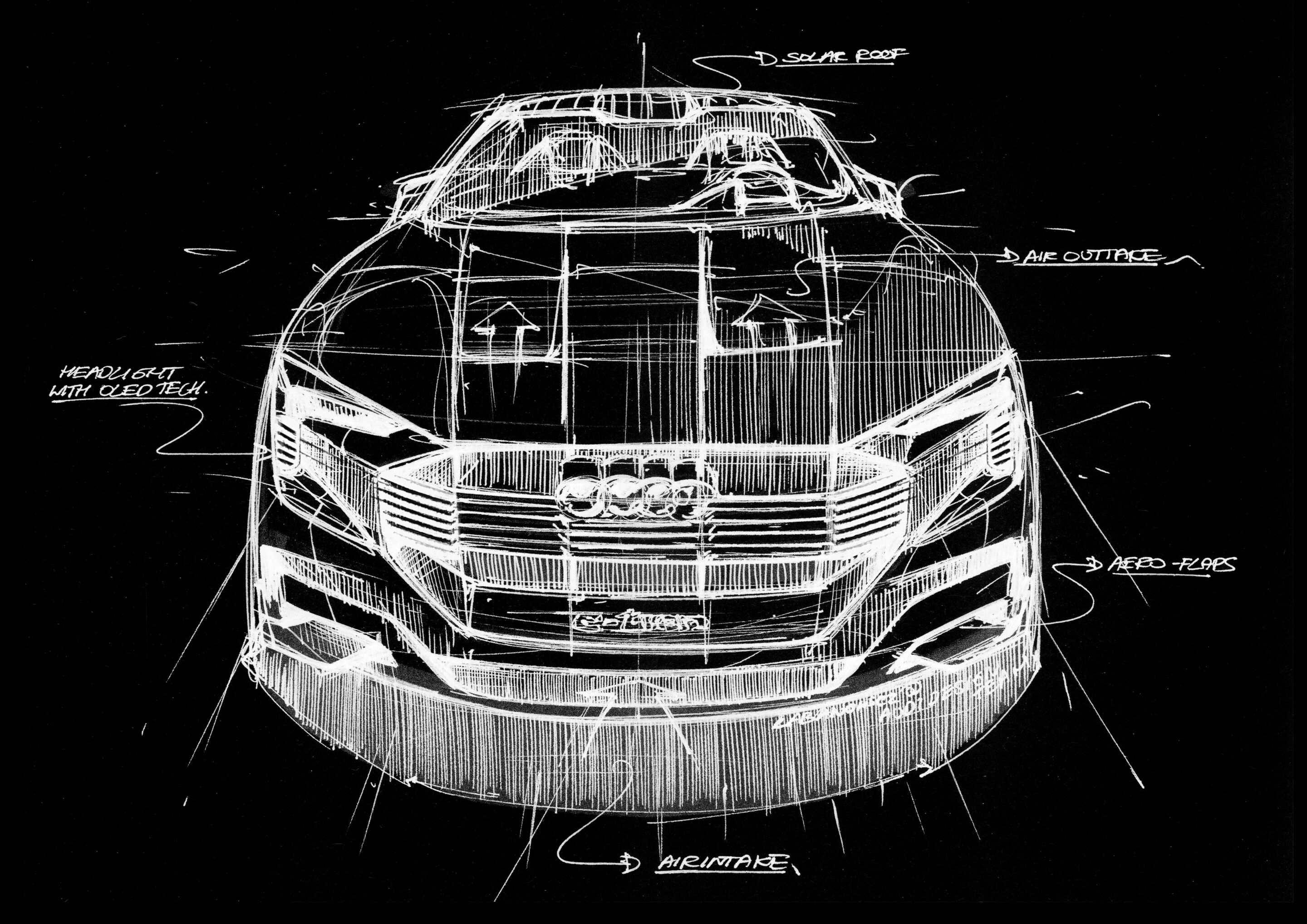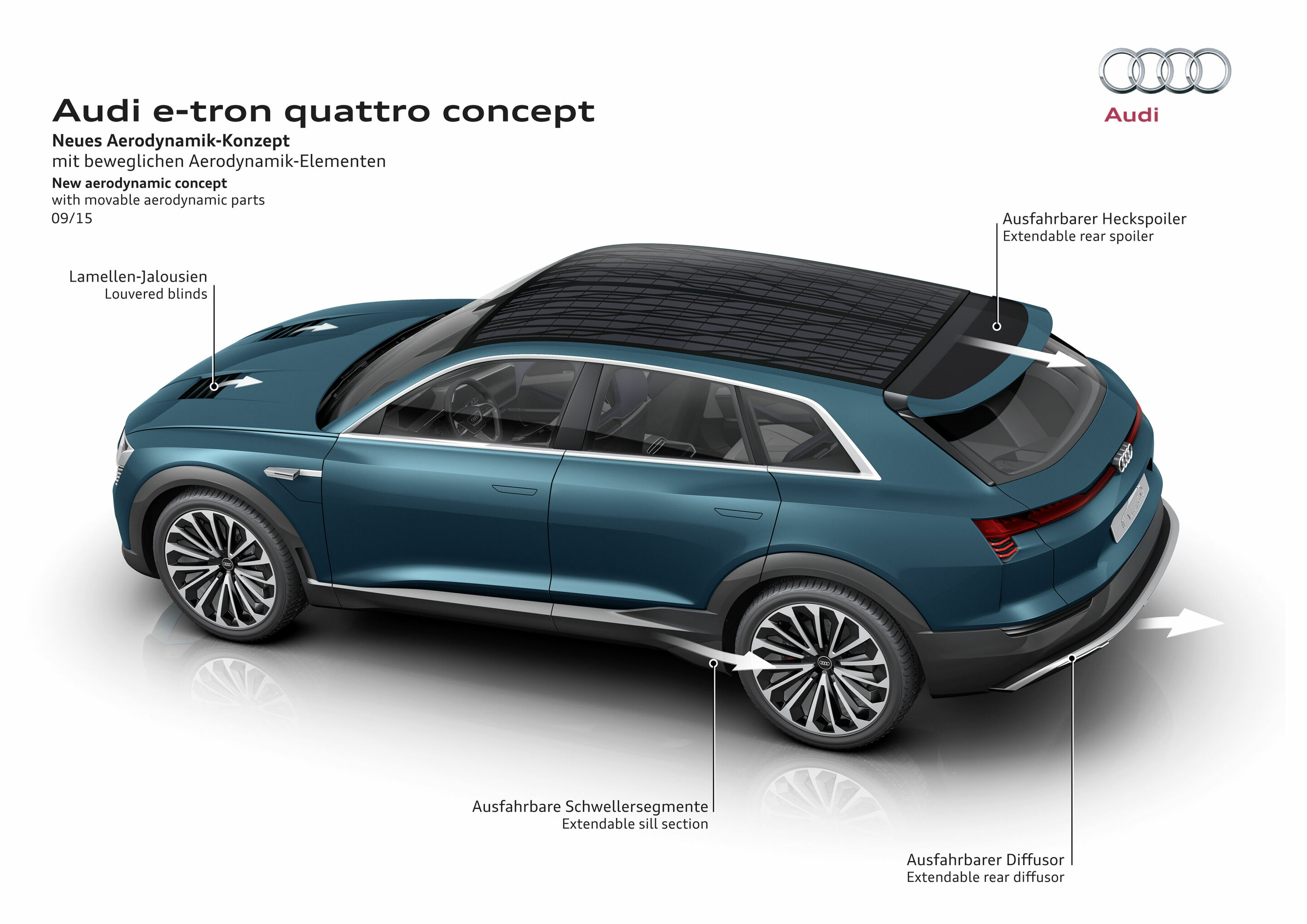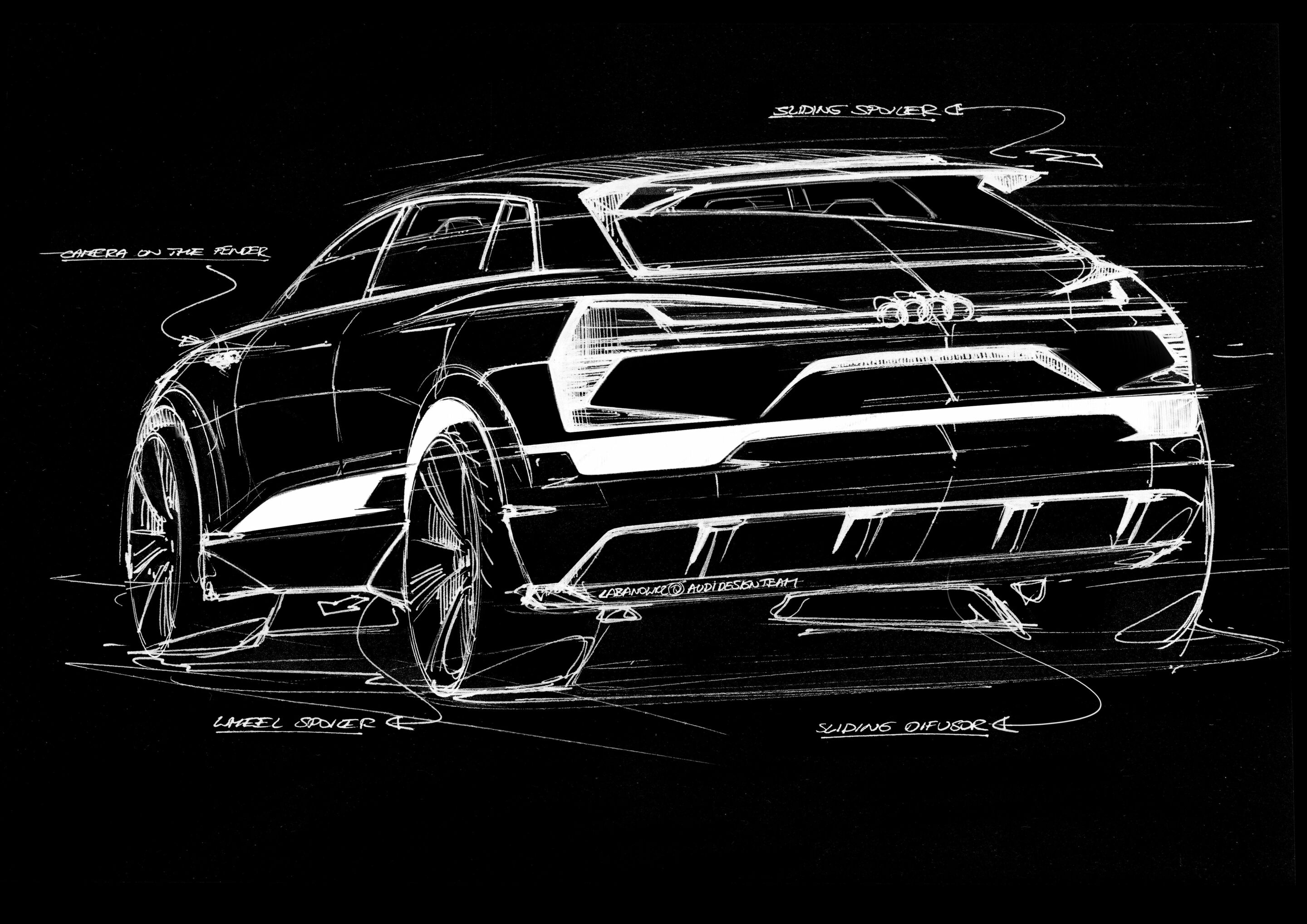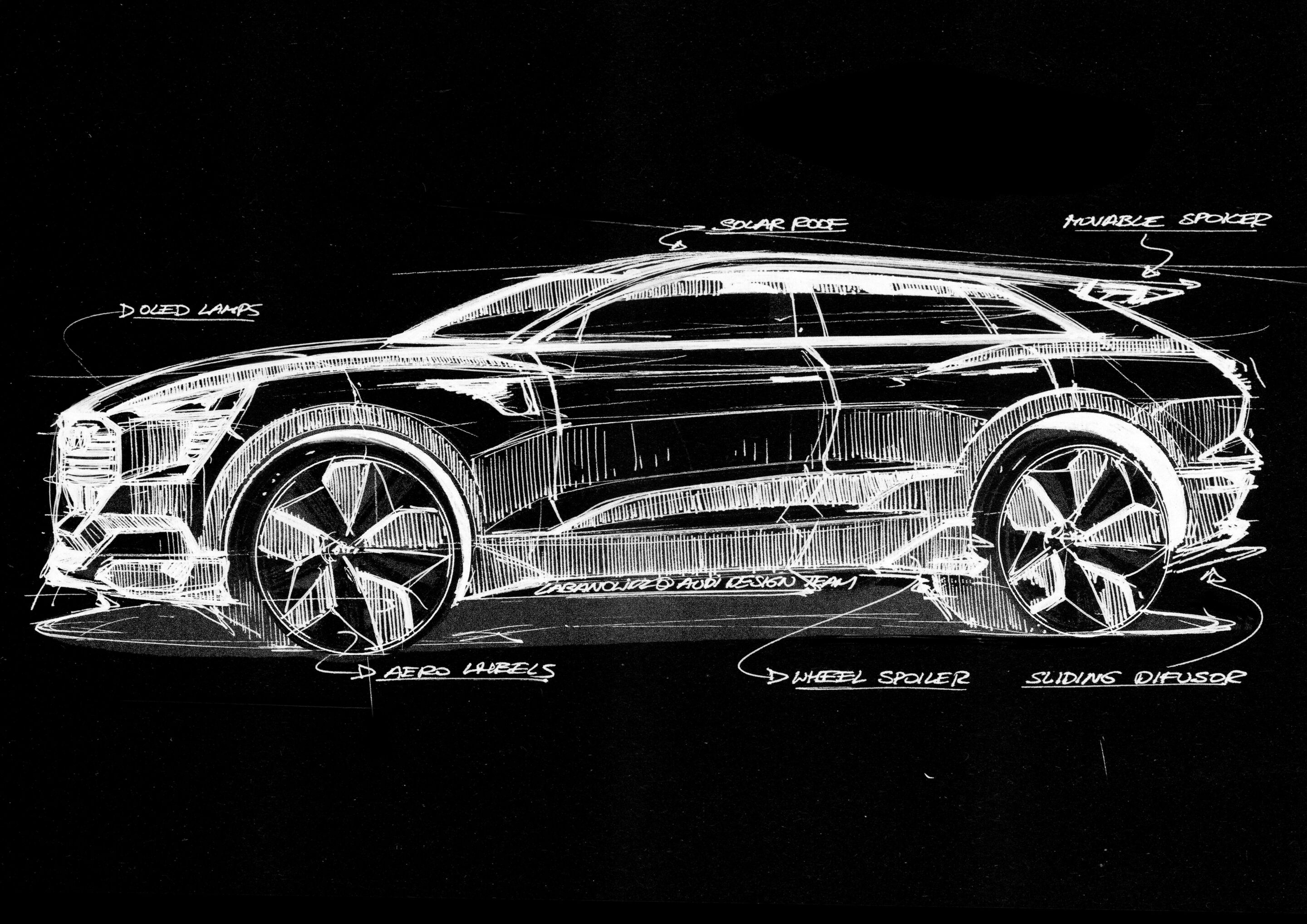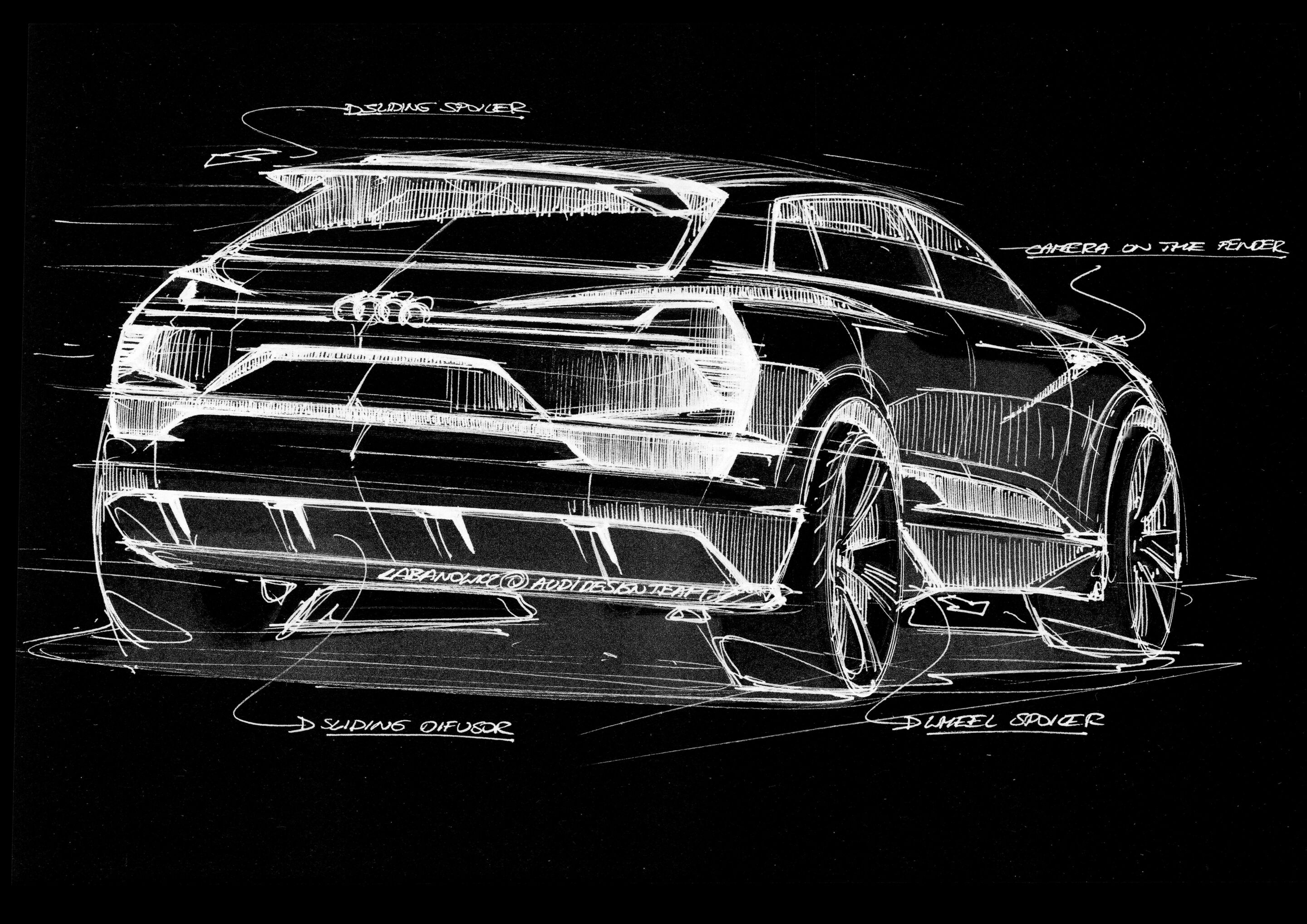Cd 0.25: The aerodynamics
Back to overviewAerodynamics are crucial for a purely electric vehicle. The range of over 500 kilometers (310.7 mi) achieved by the Audi e-tron quattro concept is also due in part to its new design, which is strongly oriented on aerodynamic principles. With its extremely low drag coefficient of 0.25, the sport SUV glides through the wind easily, quietly and highly efficiently.
4.88 meters (16.0 ft) long, 1.93 meters (6.3 ft) wide and with a 2.91 meter (9.5 ft) wheelbase, the Audi e-tron quattro concept is slotted between the Audi Q5 and the Audi Q7. At just 1.54 meters (5.1 ft), it is much lower in height than the two production models. The greenhouse is particularly low, the roofline drops down again quickly and the D pillars are correspondingly flat. The architecture has markedly coupe-like traits.
The study’s exterior design combines technical measures for reducing aerodynamic drag with creative design solutions. The new design language was developed in close collaboration between aerodynamics engineers and designers. This concept includes a long body along which the air flows cleanly, an in-drawn tail end with a sharp spoiler lip, exhaustive fine-detailing on the outer skin and the wheels, and a completely enclosed, aerodynamically optimized floor pan with newly designed microstructures. These resemble the surface of shark skin.
The aerodynamics concept also includes the new, in part movable elements at the front, on the sides and at the rear of the Audi e-tron quattro concept. At speeds above 80 km/h (49.7 mph), they direct the flow of air to improve flow around and through the car. In the engine hood, two seals, each with four louvers, regulate the flow of air through the thermal management components installed in the front end. The suction effect on the surface of the hood makes it possible to reduce the electrical power of the fan.
At higher speeds the spoiler on the rear hatch extends by as much as 100 millimeters (3.9 in), thus elongating the separating edge. At the same time the diffuser extends to the rear. The targeted merging of the air flows from the roof and the underfloor regions provides for positive aerodynamic effects.
Compact electric motors in the side sills are activated at higher speeds. These force the rear segments of the strips 50 millimeters (2.0 in) outward like a funnel so that the air flows past the rear wheels.
Sophisticated aeroacoustics ensure that wind noise in the Audi e-tron quattro concept remains impressively low even during fast driving. There is no engine noise in any case – the peace and quiet on board makes the electric driving experience even more fascinating.
The equipment, data and prices specified in this document refer to the model range offered in Germany. Subject to change without notice; errors and omissions excepted.
